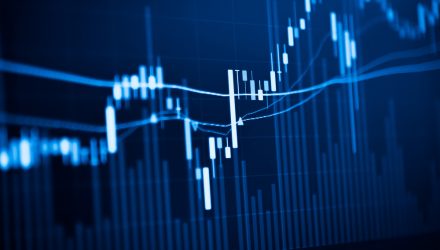Fixed income investors nowadays are searching high and low for yield, but of course, the higher, the better depending on the scenario. Rather than invest in individual high yield bonds themselves, there are options in exchange-traded funds (ETFs).
“More money has gone into bond funds than any other asset class in ETFs,” Harry Whitton, head of ETF sales and trading at Old Mission, told CNBC’s “ETF Edge.” “We have seen more equity volume probably over the last month or so, but if you go back all the way, back to when the pandemic started, bonds have really been the king.”
Per a CNBC report, “bond funds have accrued $85 billion in inflows compared with $20 billion for equity-based funds, said Whitton, whose firm provides liquidity for some of the hardest-to-price ETFs on the market.”
ETF Options in High Yield
Here are some high yield funds to consider for junk bond exposure:
- iShares iBoxx $ High Yield Corp Bond ETF (NYSEArca: HYG): HYG tracks the investment results of the Markit iBoxx® USD Liquid High Yield Index, which is comprised of high yield U.S. corporate bonds that have less than investment-grade quality.
- SPDR Bloomberg Barclays Short-Term High Yield Bond ETF (NYSEArca: SJNK): SJNK seeks to provide investment results that correspond generally to the price and yield performance of the Bloomberg Barclays US High Yield 350mn Cash Pay 0-5 Yr 2% Capped Index. SJNK invests its total assets in the securities comprising the index, which is designed to measure the performance of short-term publicly issued U.S. dollar-denominated high yield corporate bonds.
- iShares 0-5 Year High Yield Corp Bond ETF (NYSEArca: SHYG): SHYG seeks to track the investment results of the Markit iBoxx® USD Liquid High Yield 0-5 Index, which is primarily composed of U.S. dollar-denominated, high yield corporate bonds with remaining maturities of less than five years. Like SJNK, debt maturities are shorter, thereby helping to hedge some credit risk, but issues are still less than investment-grade.
-
VanEck Vectors Short High-Yield Municipal Index ETF (SHYD): seeks to replicate as closely as possible, before fees and expenses, the price and yield performance of the Bloomberg Barclays Municipal High Yield Short Duration Index. The fund normally invests at least 80% of its total assets in securities that comprise the benchmark index. The index is composed of publicly traded municipal bonds that cover the U.S. dollar-denominated high yield short-term tax-exempt bond market.
For a high yield option to squeeze out that extra yield albeit more risk, take a look at the Goldman Sachs Access High Yield Corporate Bond ETF (GHYB). GHYB seeks to provide investment results that closely correspond, before fees and expenses, to the performance of the FTSE Goldman Sachs High Yield Corporate Bond Index.
The fund seeks to achieve its investment objective by investing at least 80% of its assets (exclusive of collateral held from securities lending) in securities included in its underlying index. The index is a rules-based index that is designed to measure the performance of high yield corporate bonds denominated in U.S. dollars that meet certain liquidity and fundamental screening criteria.
For more market trends, visit ETF Trends.







